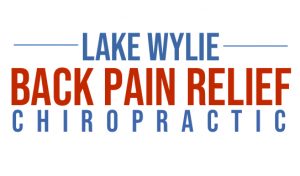There are many different reasons why injuries sustained in car crashes result in chronic or long-term pain. First, there are several types of tissues in the neck that can give rise to pain. The most intense pain comes from the tissues with the greatest density of nerve fibers, such as the joint capsules and the ligaments holding the bones of the neck together. There are many ligaments in the neck that are vulnerable to being over-stretched and injured in a motor vehicle collision.
The mechanism of a “whiplash” injury in a rear-end collision is unique. Upon impact, the vehicle rapidly accelerates forward while the head momentarily remains in its original position, resulting in an initial straightening of the neck followed by extension. At the extreme end-range of backward extension motion, the ligaments in the front of the neck are over-stretched and can tear. Within milliseconds, the head is then propelled forwards into flexion which can then injure the ligaments in the back of the neck placing a significant amount of force on the joint capsules and ligaments holding the bones in close proximity. Another reason the neck is injured is the speed at which the head and neck “whip” in the backwards and forwards directions after the impact. This occurs faster than what we can voluntarily contract our neck muscles to resist—within 600 milliseconds! Therefore, even if we brace ourselves in preparation for an impact, we can’t avoid injury to the ligaments and joint capsules. Damage to the ligaments is difficult to “prove” by conventional x-ray, which is why bending views or, flexion/extension x-ray methods are needed. When there is damage to the ligaments, the vertebra will shift forwards or backwards excessively compared to neighboring vertebra. This can be measured to determine the extent of ligament laxity or damage and can help explain why neck pain can be so intense and/or chronic following an automobile collision. Not all car accidents occur from behind. In fact, only about 1/3 occur from this direction. One study investigated which direction created greater degrees of injury and found 57% of chronic pain patients in the study population were involved in rear-end collisions. The study also found that woman are more at-risk than men for whiplash injuries and that frontal and rear-end collisions resulted in significantly higher levels of ligament injury than side impacts
Another well-published reason why neck pain can “hurt so much” after a car crash is that the sensory input from the injured area to the brain can be so extreme that it leaves an “imprint” in the sensory portion of the nervous system and it becomes hypersensitive or sensitized, resulting in a lower pain threshold or being more sensitive to pain. This is similar to the “phantom limb” phenomenon that often occurs after a leg is amputated where the brain still “feels” leg pain after the limb has been removed. This has also been reported to be a reason for the significant constellation of symptoms often accompanying “whiplash” injuries. A partial list of symptoms associated with whiplash injuries includes neck pain, headache, TMJ / jaw pain, dizziness, coordination loss, memory loss, and cognitive difficulty in formulating thought, communicating, and losing your place during conversation.
Understanding whiplash and all of its nuances regarding signs and symptoms, x-ray requirements and measurement techniques, and treatment / management strategies are well understood by doctors of chiropractic. Chiropractors have a unique advantage over other healthcare providers as manual therapies, including spinal manipulation, have been shown to yield higher levels of satisfaction and faster recovery rates compared with other forms of healthcare.

